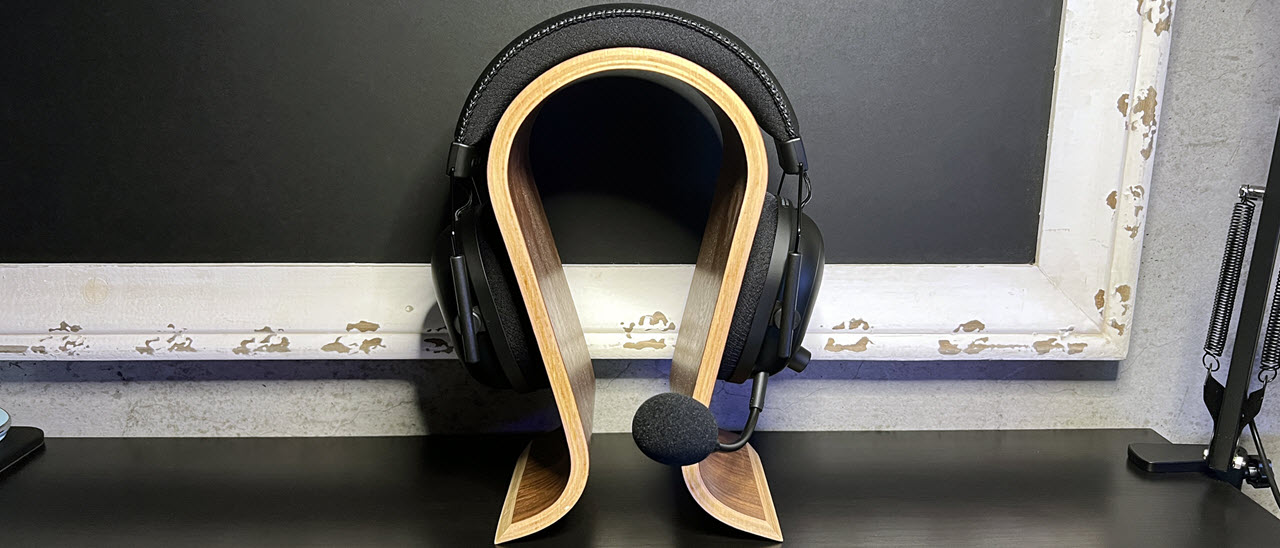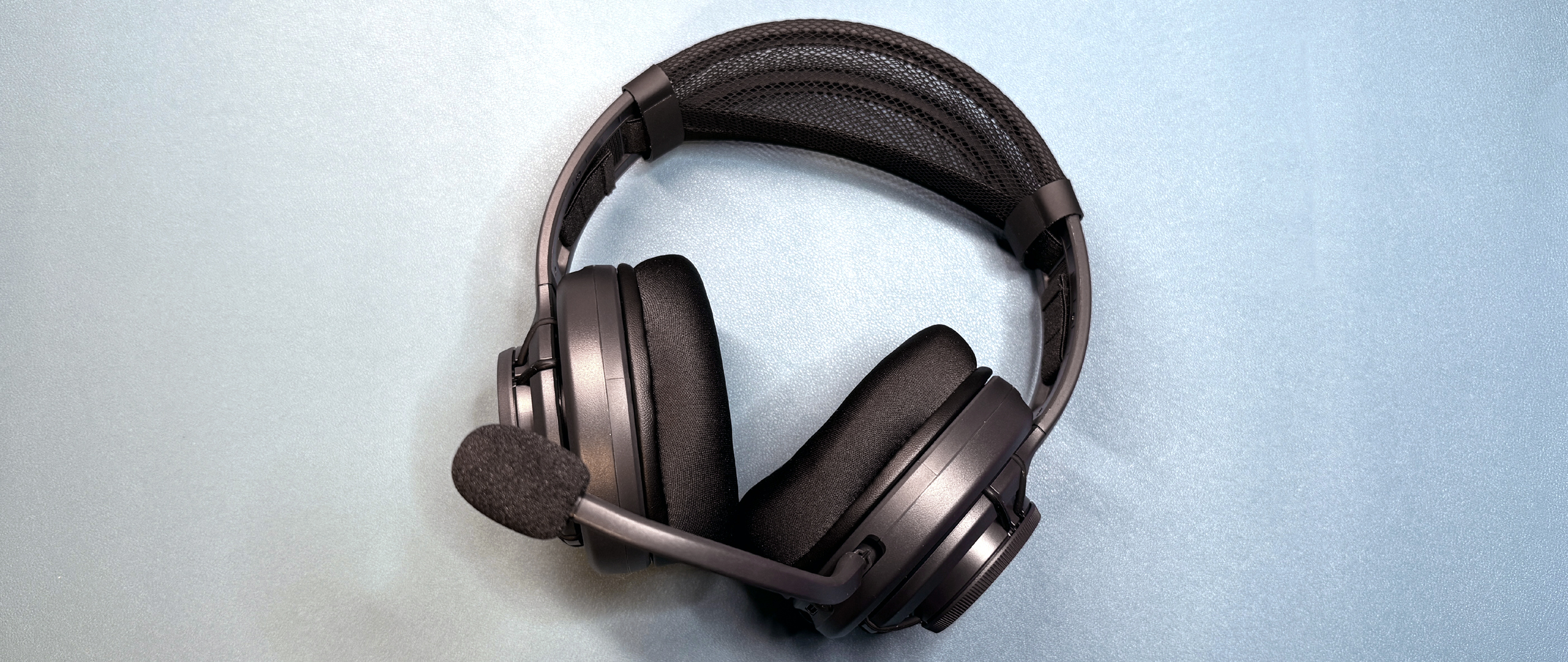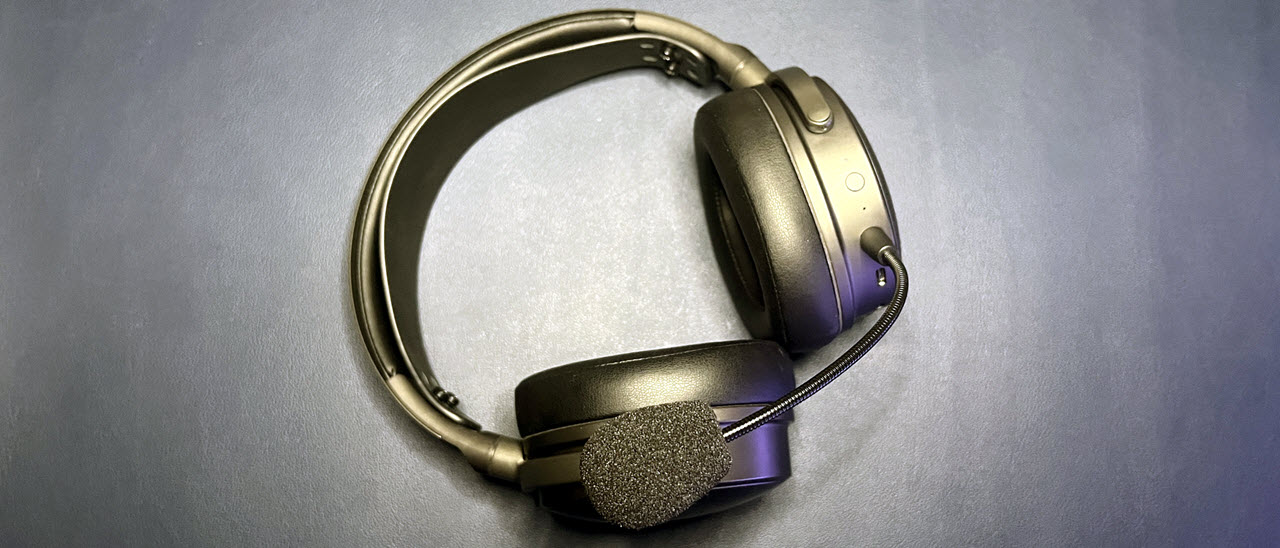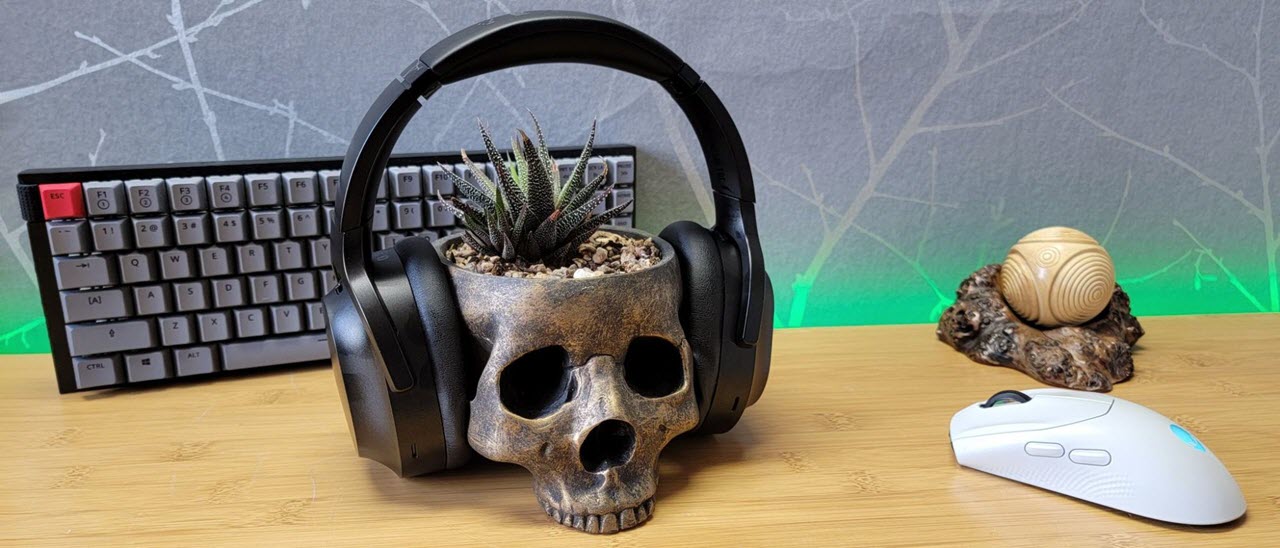Best Wireless Gaming Headsets 2025: Bluetooth, Budget, and More
The best gaming headsets — untethered.
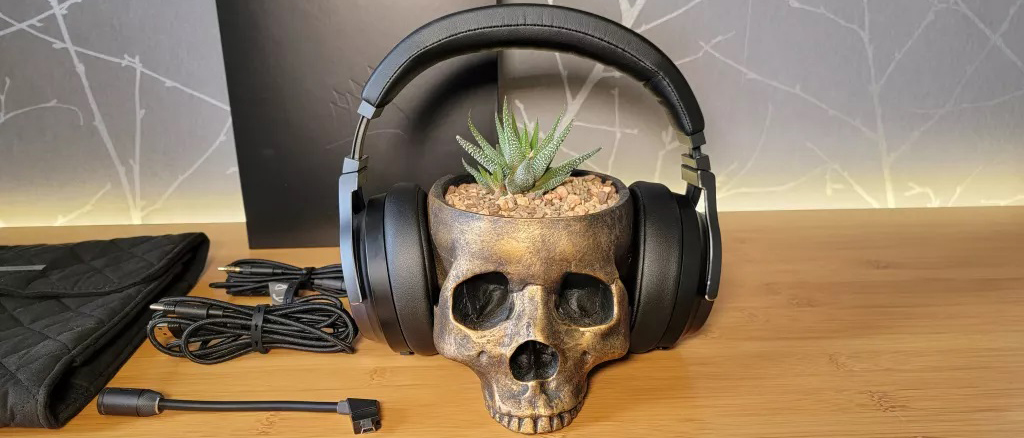
A great gaming headset is key component of your battle station, especially if you can't crank up the volume on some of the best PC speakers.
There are many, many wireless headsets to choose from, both for gaming and for everything else. The sheer number of options can be pretty overwhelming, which is why we're here to help. We've tested dozens of wireless gaming headsets over the years — paying special attention to the specs and features gamers are looking for: detailed, directional audio, a low-latency connection, a decent mic, and enough comfort and adjustability to get you through a marathon session. These are the best wireless gaming headsets for every type of gamer, no matter what your budget is.
If you don't need (or want) a wireless headset, head over to our list of best PC gaming headsets.
The Quick List
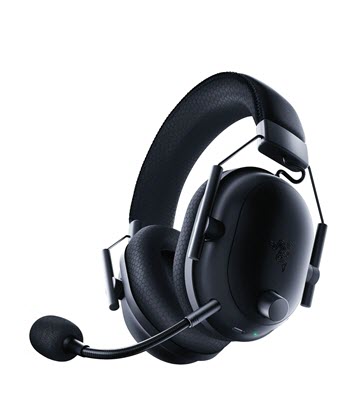
Best Wireless Gaming Headset Overall
This lightweight, comfortable headset features dual — but not simultaneous — wireless connectivity, 70+ hours of battery life, and the best mic we've heard on a headset.
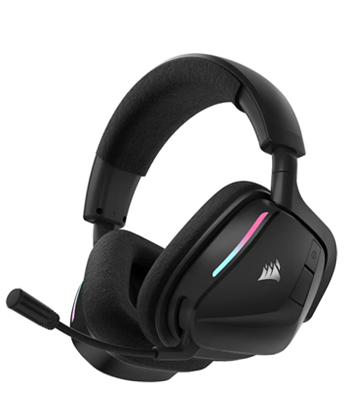
Best Mid-Range Wireless Gaming Headset
It's not the sexiest wireless gaming headset, but it's got great sound, a flip-to-mute mic, 2.4GHz wireless and Bluetooth connectivity, and 70-hour battery life. And it's not totally devoid of style — it's got forward-facing customizable RGB lighting on the earcups
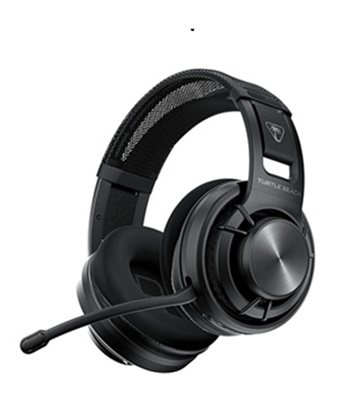
Best Open-back Wireless Gaming Headset
There aren't a lot of open-back gaming headsets, and this comfortable, great-sounding open-back headset is also the first wireless open-back gaming headset on the market
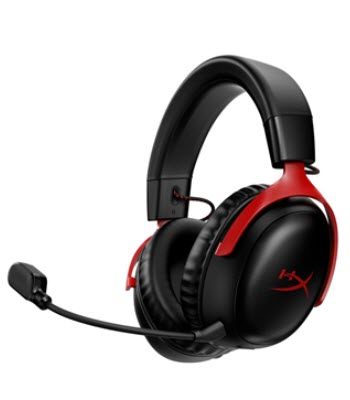
Most Comfortable Wireless Gaming Headset
You'll forget you're wearing this headset — that's how comfortable it is. Comfort aside, it's well-built and a solid performer, but it's limited by its single (2.4GHz wireless) connectivity option.
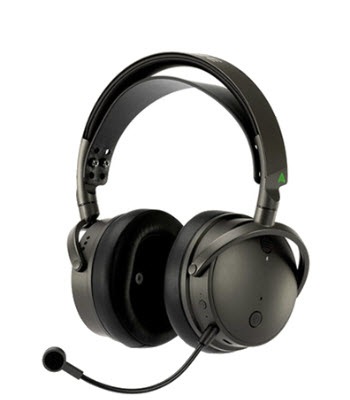
Best Wireless Gaming Headset for Audiophiles
This large, over-ear headset is surprisingly comfortable given its size and weight — and Audeze's 90mm planar magnetic drivers sound fantastic.

Best Lifestyle Wireless Gaming Headset
This understated, all-black headset features built-in beamforming noise-canceling mics, a lightweight, comfortable frame, and comes with a sturdy travel case.
The Best Wireless Gaming Headsets You Can Buy Today
Why you can trust Tom's Hardware
Best Wireless Gaming Headset
Specifications
Reasons to buy
Reasons to avoid
While we always recommend a standalone gaming microphone if you want to sound your best, Razer's most recent BlackShark V2 Pro (2023) headset is an excellent alternative — it has the best-sounding microphone we've heard on a gaming headset (and great audio, too).
The BlackShark V2 Pro (2023) is the 2023 update to the BlackShark V2 Pro, and it has roughly the same design and drivers — 50mm dynamic drivers with a frequency response range of 12 - 28,000 Hz as the original. Audio sounds good with Razer's EQ adjusted, if a little mid-range heavy. The headset's stainless steel sliders have been reinforced and its battery has been upgraded to offer an impressive 70+ hours.
The BlackShark V2 Pro (2023) also has a new detachable boom mic: a 9.9mm condenser mic with a sampling rate of 32 kHz and an internal pop filter (plus an optional external pop filter). The mic made our voice sound full and broadcast-y, even without Razer's software-based EQ settings turned on. And, to quote a Tom's Hardware editor during one of our meetings, we sounded "better than we do in real life."
The BlackShark V2 Pro (2023) has both 2.4GHz wireless and Bluetooth connectivity — it can connect to both simultaneously, but does not mix audio from both sources so you'll need to switch between the two. Its earcups also do not swivel to fold flat, and the reinforced steel sliders are still relatively fragile, so it's not a headset we'd recommend you take traveling.
Read: Razer BlackShark V2 Pro (2023) Review
Best Mid-Range Wireless Gaming Headset
Specifications
Reasons to buy
Reasons to avoid
Corsair's Void Wireless v2 might not be the sexiest wireless gaming headset you've ever seen, but don't let its plastic-and-mesh construction fool you — it's a solid performer and it has the wireless connectivity options you're looking for. The Void Wireless v2 features a lightweight plastic frame, a non-detachable flip-to-mute microphone, built-in 2.4GHz wireless and Bluetooth, and it sounds great for both gaming and music. It did get a price increase since we reviewed it, but it was a minor one — from $119.99 to $129.99 — and it's still a great option if you're looking to spend under $150.
The Void Wireless v2 has 50mm dynamic drivers with a standard frequency response of 20 - 20,000 Hz. The headset's audio quality is surprisingly impressive across all forms of media — games, music, movies, and TV shows all sounded great in our testing. The sound profile is fairly balanced, though the bass is a little restrained, and the drivers do a great job of separating out detail in complex, layered game environments. It also did an excellent job of replicating directional sound — nobody is going to sneak up on you in Counter-Strike 2 when you're wearing this.
The headset is also very comfortable, even if it's not the prettiest headset you've ever seen. It has a plastic frame, so it's fairly lightweight at just 10.58oz (300g). Its large, over-ear earcups feature breathable mesh-covered memory foam earpads, and the headband also has mesh-covered memory foam padding — and both the earpads and the headband padding are replaceable. The headset's flip-to-mute microphone works well, though it is situated on a flexible gooseneck arm, which makes it slightly trickier to flip smoothly. And while the headset isn't much to write home about aesthetically, it does have forward-facing customizable RGB lighting on each earcup, just in case you do happen to be streaming or otherwise visible.
Read: Corsair Void Wireless v2 Review
Best Open-back Wireless Gaming Headset
Specifications
Reasons to buy
Reasons to avoid
An open-back headset is a good compromise for people who don't love the focused effect of closed-back headsets, but who aren't gaming in a place where they can crank up the sound on some of the best PC speakers. Turtle Beach's Atlas Air is the world's first wireless open-back gaming headset (yes, there are a lot of qualifiers), and it's a pretty impressive option. It features 40mm dynamic drivers with support for 24-bit audio, both 2.4GHz and Bluetooth wireless connectivity, and a lightweight, airy open-back design.
The Atlas Air is incredibly lightweight and comfortable, weighing in at just 10.61 ounces (301g) with the microphone installed. It has a flexible plastic frame, "floating" earcups, and a mesh and adjustable elastic strap to keep the headband "floating" away from your head. It's a very comfortable headset if it fits you — if your head is on the larger side, the mesh and elastic strap don't work quite as well. It has plush, fabric-covered memory foam earpads, and both the earpads and the elastic band are replaceable. The downside to this ultra-lightweight construction is that it does look and feel a little cheap — it's all plastic and mesh.
The headset sounds great for both listening and gaming, with a balanced sound profile that trends toward the low-end. The open-back design allows for a wider soundstage and games with rich, layered audio (such as the jungle in Uncharted 4) sound especially immersive on the Atlas Air. This isn't the best headset for games that benefit from more focused, directional audio (such as competitive FPS games), but directional sound is still accurate.
There are a couple of downsides to this headset — the removable, flip-to-mute microphone is below average unless you tweak it in the software, and Turtle Beach's software is a mess. However, if you don't need a mic and you avoid installing the software, this is a great-sounding headset you can wear all day.
Read: Turtle Beach Atlas Air Review
Most Comfortable Wireless Gaming Headset
Specifications
Reasons to buy
Reasons to avoid
The HyperX Cloud III Wireless is officially the most comfortable wireless headset we've ever worn — in fact, it's just as comfortable as its wired counterpart (the HyperX Cloud III). The Cloud III Wireless is an over-ear headset with a padded, leatherette-covered headband and soft, leatherette-covered earpads. It weighs 11.64oz (330g), which is close to what the Arctis Nova Pro weighs.
The Cloud III Wireless has the same 53mm dynamic drivers as the Cloud II Wireless, but they've been redesigned and angled for a better audio experience. The drivers have a frequency response of 10 - 21,000 Hz, which is a little wider than the average gaming headset but not as wide as the Arctis Nova Pro or the Virtuoso RGB Wireless XT. It comes with a detachable 10mm boom microphone, which has an internal pop filter and a red mute indicator light.
The headset gets an impressive 120 hours of battery life, which is more than just about any wireless gaming headset you'll find, save for the HyperX Cloud Alpha Wireless, which gets a whopping 300+ hours. The downside is that this headset only offers one connectivity option, which is 2.4GHz wireless — no analog/wired connection, no Bluetooth, nothing. In other words, it's a great headset so long as you only plan on using it with one device — and that device has to be something you can plug the headset's USB-C dongle into.
Read: HyperX Cloud III Wireless Review
Best Wireless Gaming Headset for Audiophiles
Specifications
Reasons to buy
Reasons to avoid
The Audeze Maxwell is a large, over-ear headset with a steel and aluminum frame and Audeze's newly-designed 90mm planar magnetic drivers. It's larger and heftier than most gaming headsets, weighing in at a whopping 17.28 ounces (490g) — I won't pretend like you won't feel it on your head, because you will, but it's surprisingly comfortable nonetheless.
The Maxwell's 90mm planar magnetic drivers have a wide frequency response range of 10 - 50,000 Hz, and the headset has an impressively wide and detailed soundstage. The Maxwell is tuned by default for gaming, but music also sounds fantastic once you've adjusted the EQ slightly. The headset comes with a detachable boom mic, but it also has built-in mics in the earcups — they're not great, but they're convenient if you need to take a call and you don't have the detachable mic with you.
The Maxwell offers both 2.4GHz wireless and Bluetooth connectivity, but does not mix audio from both sources and — much to our annoyance — switches between sources automatically (prioritizing Bluetooth). This was our main source of frustration with this headset — otherwise, it's fantastic, with 80+ hours of battery life, solid connectivity, and audiophile sound quality.
Read: Audeze Maxwell Review
Best Lifestyle Wireless Gaming Headset
Specifications
Reasons to buy
Reasons to avoid
The Razer Barracuda Pro Wireless looks more like a lifestyle headset from Sony or Bose than it does a gaming peripheral from Razer. Featuring a surprisingly understated (for Razer) all-black design, built-in beamforming mics, and a sturdy travel case, the Barracuda Pro Wireless is a good option for anyone who wants a headset that can pull double-duty.
The headset is comfortable and lightweight, with a minimal all-plastic design. It has Razer's custom 50mm dynamic drivers, which have a frequency response range of 20 - 20,000 Hz, and a pair of integrated beamforming noise-canceling mics in the earcups. They're not the best mics we've ever seen in a headset, but they do a good enough job of picking up your voice and keeping background noise low — they should be fine for most gamers. (And they're significantly better than the Audeze Maxwell's built-in beamforming mics, which are basically just a courtesy and nothing else.)
On the lifestyle side, the Barracuda Pro Wireless has three levels of active noise cancellation (a somewhat rare feature in gaming headsets to begin with), and it gets up to 40 hours of battery life — decent, but not particularly impressive. It offers both 2.4GHz wireless and Bluetooth connectivity, but does not mix audio from multiple sources (like the Arctis Nova Pro and Virtuoso RGB Wireless XT do), so you'll need to switch between sources using a dedicated "SmartSwitch" button on the right earcup.
The main drawback to the Barracuda Pro Wireless is its somewhat less-than-premium build — the plastic looks a little cheap and attracts fingerprints. But it's fairly lightweight, at 11.99 ounces (340g), and comes with a nice rigid travel case.
Read: Razer Barracuda Pro Wireless Review
Other Wireless Headsets We Tested
Asus ROG Delta II
Asus' ROG Delta II is the brand's premium, flagship gaming headset, and it has a lot going for it: 50m titanium-plated drivers, a 10mm super wideband mic, simultaneous wireless audio connection mixing, customizable lighting, and a battery that lasts for over 100 hours. It doesn't look quite as premium as other headsets, however, as it features a primarily plastic build — and while it's lightweight, it's not particularly comfortable.
In my testing, I found the headset's 50mm drivers to be a little disappointing for listening to music, though they sounded very good when I was playing games. The headset has excellent directional audio and voices sound full and clear. The microphone performed well but was situated at an awkward angle — while it was still able to pick up my voice well enough, I didn't like that it pointed down and now toward my face. The ROG Delta II is a solid wireless headset, but it kept falling short of what I expected for a headset with an MSRP of $230.
Read: Asus ROG Delta II Review
SteelSeries Arctis Nova 5 Wireless
While the SteelSeries Arctis Nova 5 Wireless headset, which retails for $130, is quite a bit more affordable than the Arctis Nova Pro, it might make too many compromises. It does have a great design — a lightweight, comfortable build with the brand's signature stretchy ski band and a fully-retractable boom mic. It's definitely a headset you'll be able to wear all day without any issues, and it looks more like a lifestyle headset than a gaming peripheral.
The Arctis Nova 5 features dual wireless connectivity with a quick-switch button and 50 - 60 hours of battery life, which is the longest battery life seen in a SteelSeries headset to date (though it's nowhere near that of many competitors). It sports the brand's 40mm dynamic drivers, which have a frequency response range of 20 - 22,000 Hz and is supported by SteelSeries Sonar software as well as an iOS/Android app that lets you switch up sound profiles without connecting to your PC. I'm not the biggest fan of these drivers, as they tend to have some distortion in the lower mid-range as well as overall compression, but they sound decent for gaming and movies/shows and the headset handles virtual surround quite well.
Read: SteelSeries Arctis Nova 5 Wireless Review
Frequently Asked Questions
🎧 How to connect a wireless headset?
Wireless gaming headsets connect via 2.4GHz wireless and/or Bluetooth. For most headsets, connecting to 2.4GHz wireless is as straightforward as plugging the USB dongle into your PC or other device and turning the headset on. If the headset doesn't automatically pick up the 2.4GHz signal, you may need to update firmware or re-pair the headset to its dongle (check your headset's manual for specific instructions).
🎧Are wired headsets better than wireless?
Wired gaming headsets certainly have some obvious advantages over wireless gaming headsets — they're plug-and-play (literally), and they don't have to be charged. While 2.4GHz wireless is a very low-latency connection, it's not as low-latency as a wired connection. Wired headsets also tend to last longer (the battery won't die, for example), and will often weigh less and cost significantly less.
Of course, there's nothing quite like the freedom of not having to take your headset off every time you stray too far from your PC — while most wired gaming headsets come with decently long cables, they're still cables.
🎧 How to connect a wireless headset to a PS5 / Xbox?
If you want to pair your headset to a console, make sure you purchase a headset that's compatible with your console — some wireless headsets (including our favorite Audeze Maxwell) come in different variations for PS5 and Xbox. The PS5 supports standard 2.4GHz wireless connectivity, but the Xbox does not, so while PC-compatible headsets will work with your PS5, they won't work with your Xbox unless they're specifically designed to do so. Some manufacturers make different versions for PC, PS5, and Xbox (the PC and PS5 versions typically have different on-headset controls to suit the different platforms, but will work with both).
🎧 Do wireless gaming headsets use Bluetooth?
While many wireless gaming headsets have built-in Bluetooth, their primary wireless connection is through low-latency 2.4GHz wireless, which usually requires a dongle (USB-A or USB-C). Wireless gaming headsets implement Bluetooth connectivity in different ways — most have a button that lets you manually switch between connections, but some (such as the Turtle Beach Stealth 700 Gen 3) offer simultaneous dual wireless connectivity, which lets you listen to audio from two connections at the same time. This is great when it works but can be frustrating when it doesn't, so a headset with a quick-switch button (such as the SteelSeries Arctis Nova 5 Wireless) is probably a better option if you don't need simultaneous dual wireless.
Quick Gaming Headset Shopping Tips
Quick Gaming Headset Shopping Tips
Here are some things to keep in mind when searching for the perfect wireless gaming headset:
- Connectivity: Wireless headsets have come a long way, but latency will always be a concern. For gamers, a low-latency 2.4GHz wireless connection is a must for high-quality, lag-free audio. If you're thinking of using your headset away from your PC, you'll want to look for something that also has Bluetooth for connecting to multiple devices dongle-free. Premium headsets usually provide both options, and several even allow you to connect to both sources simultaneously and mix the incoming audio.
- Microphone: A cardioid or supercardioid mic, which pick up sound from one direction only, is best for a gaming headset. Also, make sure the headset has an on-ear mute button and an easy way to tell if the mic is muted — it's much easier to accidentally walk into the bathroom wearing a wireless headset and forget you're still broadcasting.
That said, you’ll never get pristine audio from a headset mic — if you're streaming or podcasting, you may want to look into the best desktop microphones. - Battery life and rechargeability: It's important to know whether your wireless headset can charge while in use and how long the device will last under a full charge. Headsets these days typically last between 30 - 40 hours between charges, but there are several that can last twice that long. There are also headsets that utilize a swappable battery system, where one rechargeable battery powers the headset and the other charges in the base station.
- Comfort: You can compare and contrast specs all day, but your headset has to be comfortable to wear. It should go without saying that anything made with cheap material like plastic shouldn’t be given the time of day. Plush memory foam, velour, leatherette, and knitted fabric are much more comfortable on the ear. And don’t forget about the headband — it should feel durable and be comfortably padded. If you can’t wear the headset before purchasing, be sure to look into how many points of adjustment it has.
Discounts on the Best Wireless Headets
Whether you're shopping for one of the best wireless headsets that we listed above or a similar model, you may find savings by checking out our lists of best Razer promo codes, best Corsair coupon codes and best Newegg promo codes.
MORE: Best Gaming Monitors
MORE: Best Gaming Keyboards
MORE: Best Gaming Mouse
Get Tom's Hardware's best news and in-depth reviews, straight to your inbox.

Sarah Jacobsson Purewal is a senior editor at Tom's Hardware covering peripherals, software, and custom builds. You can find more of her work in PCWorld, Macworld, TechHive, CNET, Gizmodo, Tom's Guide, PC Gamer, Men's Health, Men's Fitness, SHAPE, Cosmopolitan, and just about everywhere else.
-
trevor_chdwck Reply
I bought the Corsair Virtuoso per your recommendation and had to return it within a week. Corsair put the stitching of the headset fabric on the under-side of the headset, directly digging into your head. This headset is a miserable experience for any time over an hour. That's even after adding an aftermarket head cushion and even at one point, an old-maid card. I wanted to love this headset, but the head-band design has a truly fatal flaw. I returned it and got the SteelSeries Arctis 7. It was recommended by multiple friends and the headband design is definitely more comfortable while still retaining the excellent audio. I can't understand why it (arctis 7), or it's updated sibling, the arctis 7 plus, isn't on this list.Admin said:From Bluetooth connectivity to premium leather comfort, here are the best wireless headsets for gamers, creators, and professionals alike.
Best Wireless Headsets 2022: Bluetooth, Budget, and More : Read more -
kyzarvs Do you ever review any of the pro stuff and compare to gaming kit?Reply
For example, I've use Plantronics BlackWire headsets for 9+ years now. I find as they are professional grade (call centres etc), they tend to be very high quality, very comfortable and have stable/mature app support. My current BT600 I've had for about 5 years, battery life is still excellent (multiple days), 2x wireless connections for simultaneous connections to phone & PC, NC microphone with mute button and it's been everywhere for work (car, onsite and home desk) and for gaming as well. Not as flash looking as gaming stuff f'sure, but well worth a look. My fave headset are my QC45 Bose, but that's soley as I fly a lot and the NC is astonishingly good on them. The mic in particular is nowhere near the Plantronics and they do take several hours of bedding in before they stop sounding over-harsh on the treble. -
Friesiansam Why is the Corsair Virtuoso RGB Wireless SE singled out for criticism because "Wireless range depends on house construction "?Reply
In case you haven't noticed, all wireless headsets will be similarly affected, just like other wireless devices.
